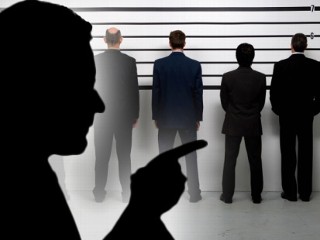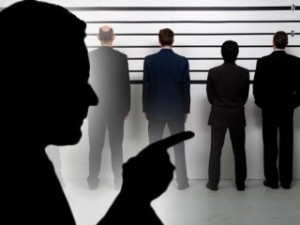
Eyewitness Testimony Part I: Reducing the Rate of Wrongful Convictions
November 1, 2012Student Blogs Article Renowned legal scholar William Blackstone famously introduced the now-commonplace notion that it is “better that ten guilty persons escape than that one innocent suffer.” Unfortunately, despite the safeguards that the United States criminal justice system provides, innocent people are imprisoned in our country. With the development of DNA testing, which is capable of proving the innocence of individuals in certain criminal investigations, the prevalence of wrongful imprisonment cases has gained widespread attention.
Renowned legal scholar William Blackstone famously introduced the now-commonplace notion that it is “better that ten guilty persons escape than that one innocent suffer.” Unfortunately, despite the safeguards that the United States criminal justice system provides, innocent people are imprisoned in our country. With the development of DNA testing, which is capable of proving the innocence of individuals in certain criminal investigations, the prevalence of wrongful imprisonment cases has gained widespread attention.
Numerous groups, perhaps most notably the Innocence Project, have made strong efforts to exonerate wrongfully-convicted individuals and to discover exactly what leads to wrongful convictions in the first place. These groups have been quite successful, as evidenced by the Innocence Project’s 300th exoneration on September 28, 2012. The efforts of these groups have taught us a lot about why individuals are wrongfully convicted. The single most common cause: faulty eyewitness testimony.
It is bad enough that eyewitness testimony may not be as reliable as we once thought. To make matters even worse, however, jurors tend to believe that eyewitness testimony is the most powerful form of evidence available. Because eyewitness evidence is so influential, and because it contributes to a hefty number of wrongful convictions, public policy demands that we take a closer look at how we can limit the effects of faulty eyewitness testimony.
In a series of related posts, I will provide some background on the justice system’s analysis of eyewitness testimony, discuss how a sea of empirical data has raised questions concerning the reliability of eyewitnesses, examine whether the current jury instructions regarding the credibility of eyewitnesses violates due process, and discuss how a recent New Jersey Supreme Court ruling may encourage nationwide reform.
In the remainder of Part I of this analysis, I hope to provide some of the necessary legal background surrounding the issue of eyewitness credibility.
In the landmark case of Neil v. Biggers, the Supreme Court of the United States first formally recognized the need to instruct jurors on how to adequately weigh eyewitness testimony. The Court came up with a five-factor guide stating that, when weighing the credibility of an eyewitness’s testimony, jurors should consider: (1) the opportunity of the witness to view the criminal and his actions at the time of the crime, (2) the witness’ degree of attention to the crime, (3) the accuracy of the witness’ prior description of the criminal, (4) the level of certainty demonstrated by the witness at the confrontation, and (5) the length of time between the crime and the confrontation. The Supreme Court later affirmed this approach in the case of Manson v Brathwaite, virtually cementing the five-factor approach as the appropriate way to analyze eyewitness reports.
The Biggers and Brathwaite approach seems straightforward and easy to understand, which is exactly the way ideal jury instructions should be. So what’s the problem? The problem is that Biggers was decided in 1972 and Brathwaite in 1977, and the Supreme Court has not reconsidered or added guidance on the issue since. More importantly, in the years since the Brathwaite decision, a vast amount of empirical research has emerged in the social science fields (primarily in the field of psychology and law) that indicates that some of the five factors may not, in fact, be good things for jurors to consider when evaluating eyewitnesses.
In Part II of this analysis, I will discuss this vast body of empirical research, citing specific examples that tend to call for a reform of the five-factor approach. Spoiler alert: extremely confident, dare I say 100% positive, eyewitnesses have sent their fair share of innocent individuals to prison.
You may also like
7 comments
- April 2024
- March 2024
- February 2024
- November 2023
- October 2023
- April 2023
- March 2023
- February 2023
- January 2023
- December 2022
- November 2022
- October 2022
- May 2022
- April 2022
- March 2022
- February 2022
- January 2022
- December 2021
- November 2021
- October 2021
- May 2021
- April 2021
- March 2021
- February 2021
- January 2021
- November 2020
- October 2020
- September 2020
- August 2020
- July 2020
- June 2020
- May 2020
- April 2020
- March 2020
- February 2020
- January 2020
- November 2019
- October 2019
- September 2019
- April 2019
- February 2019
- December 2018
- November 2018
- October 2018
- September 2018
- March 2018
- February 2018
- January 2018
- December 2017
- November 2017
- October 2017
- September 2017
- May 2017
- April 2017
- March 2017
- February 2017
- December 2016
- November 2016
- October 2016
- April 2016
- March 2016
- February 2016
- January 2016
- December 2015
- November 2015
- October 2015
- June 2015
- May 2015
- April 2015
- March 2015
- February 2015
- January 2015
- December 2014
- November 2014
- October 2014
- August 2014
- March 2014
- February 2014
- January 2014
- December 2013
- November 2013
- October 2013
- September 2013
- May 2013
- April 2013
- March 2013
- February 2013
- January 2013
- December 2012
- November 2012
- October 2012
- September 2012
- June 2012
- April 2012
- March 2012
- February 2012
- January 2012
- December 2011
- November 2011
- October 2011
- September 2011
- August 2011
- April 2011
- March 2011
- November 2010
- October 2010
- September 2010

I’m glad that you are going to take a deeper look at this important topic. As you explain, juries are, understandably, very likely to believe eyewitness testimony. That fact alone makes it a dangerous “x-factor” in any trial. In my opinion, one important thing to touch on in a future post would be the potentially mitigating power of the right to cross-examination. This is by no means a complete counter-balance to unreliable eyewitness testimony, but in some cases an adept attorney can show that even the most convinced eyewitness didn’t see the scene unfold with the depth and clarity that they now claim to have had.
I am also really interested in the upcoming posts on this topic. I am really interested in learning more about the the empirical evidence that exists about the accuracy of eyewitness testimony. Besides efforts to mitigate the effect of the testimony at trial, it might also be helpful if the community had more empirical evidence about the accuracy of such testimony. If there was more evidence and the average juror knew about the potential flaws in eyewitness testimony, it is possible that they would be more likely to accurately assess the persuasiveness of the evidence and weigh it appropriately at trial.
This is great! A person once ran into my high school psychology class, grabbed our teacher’s purse and ran out. Following the incident, which was set up by our teacher, we had a long and contentious debate about who the person was, what s/he was wearing, etc. I thought this little experiment was a great way to demonstrate this dangerous problem. It’s hard for most people to believe that their own memories are so unreliable, which seems to go to the core of this problem. It’s almost more of a state of denial that we wouldn’t remember these details, rather than a malicious misinterpretation of events. I’m excited to hear more in future posts!
Great post Greg! This is so true. Here is a 60 minutes special on this topic: http://www.youtube.com/watch?v=GtelV9lmzQc